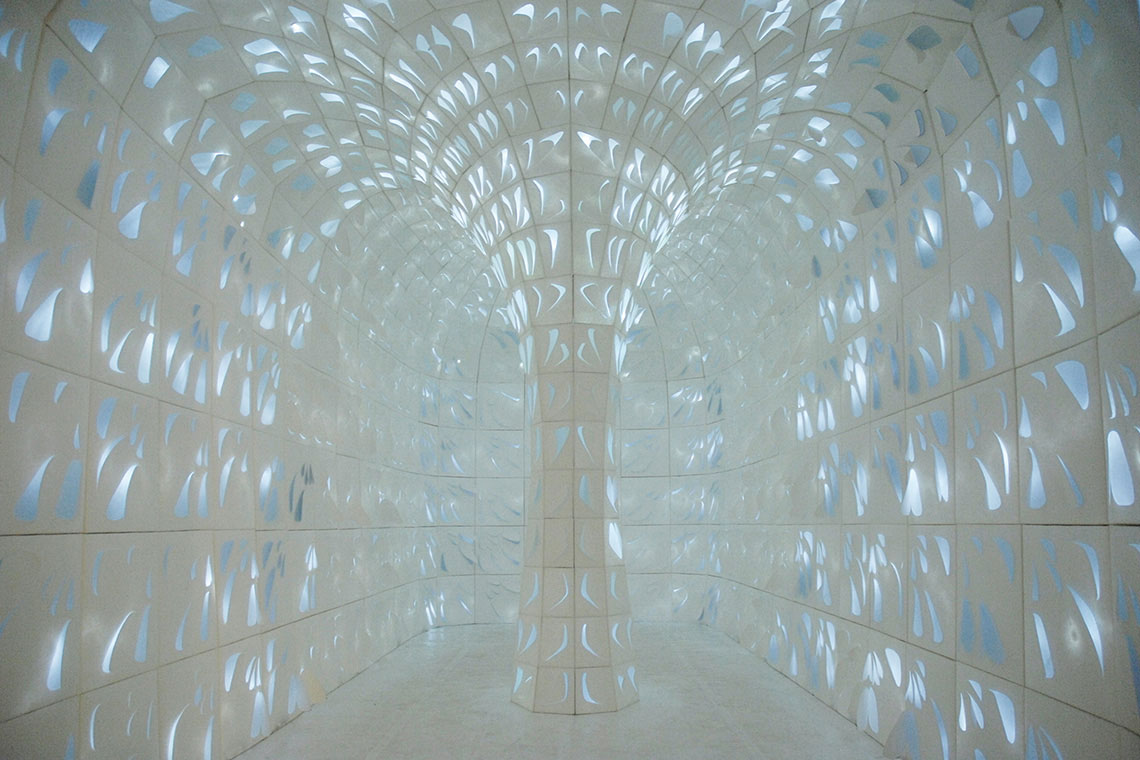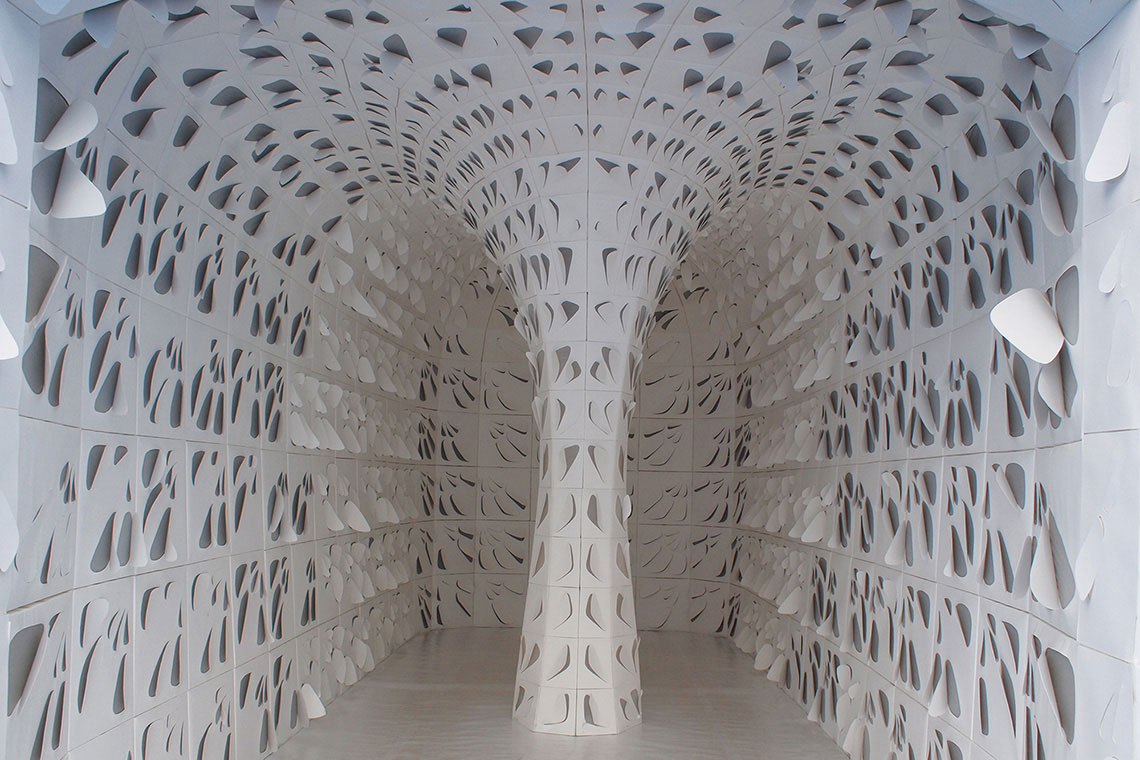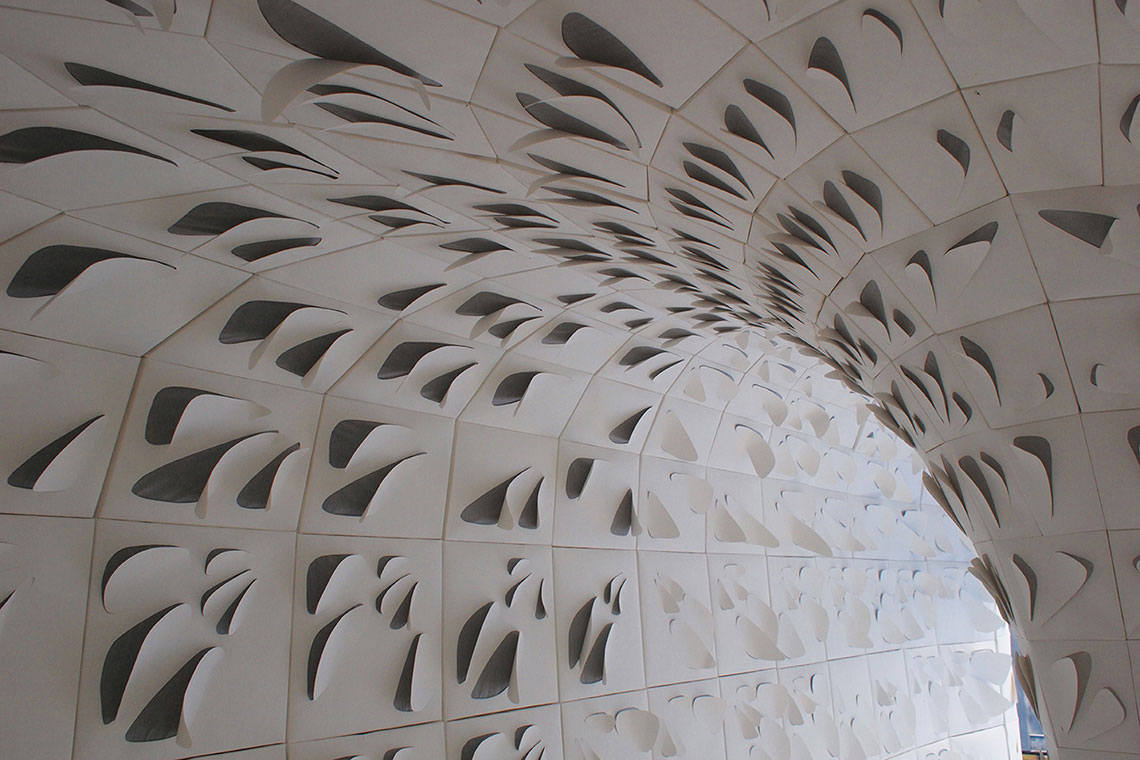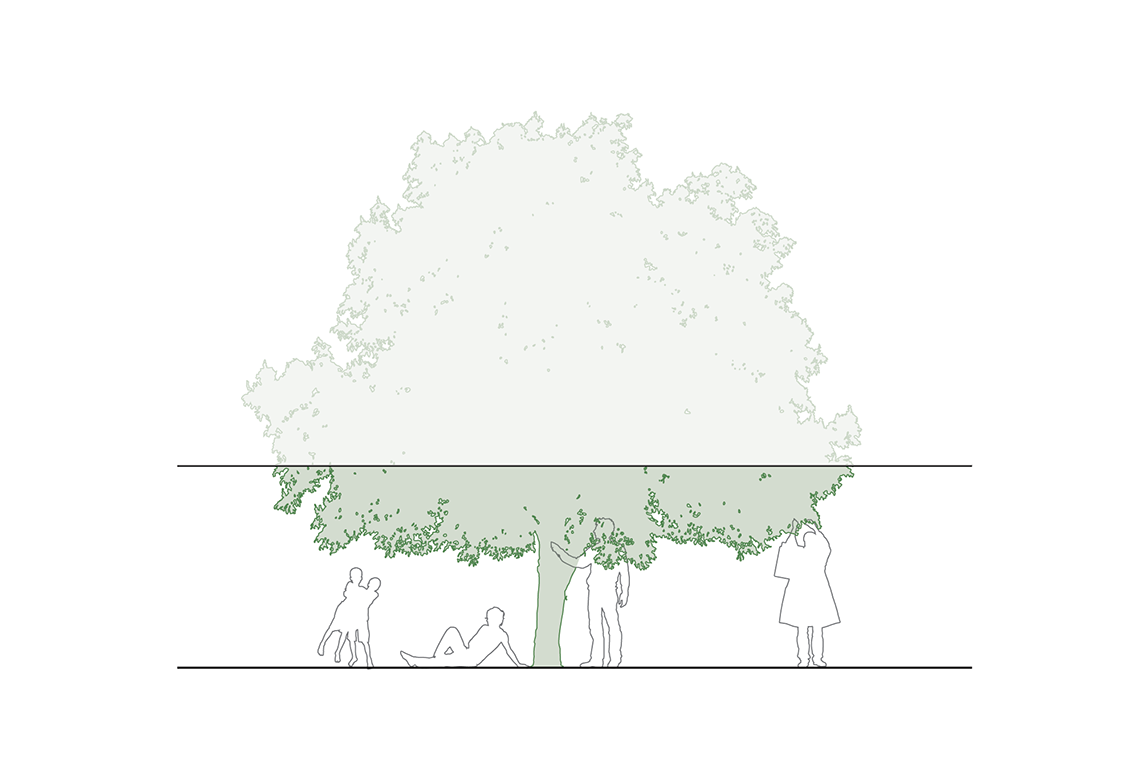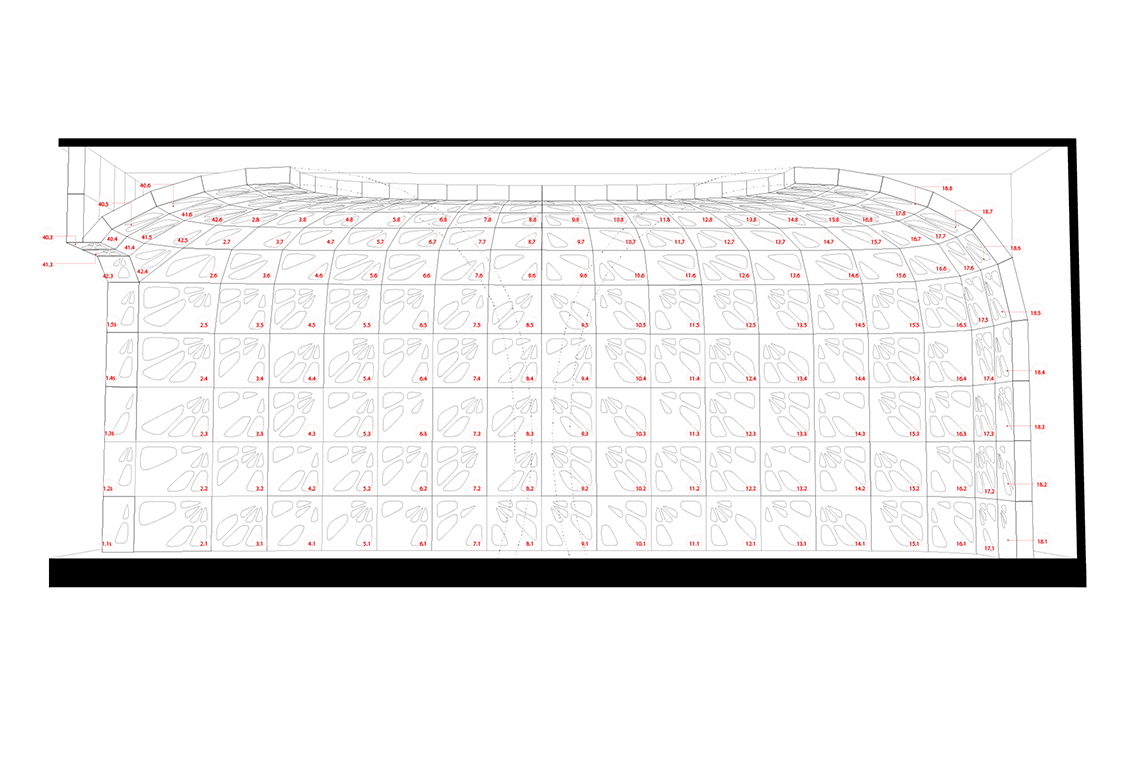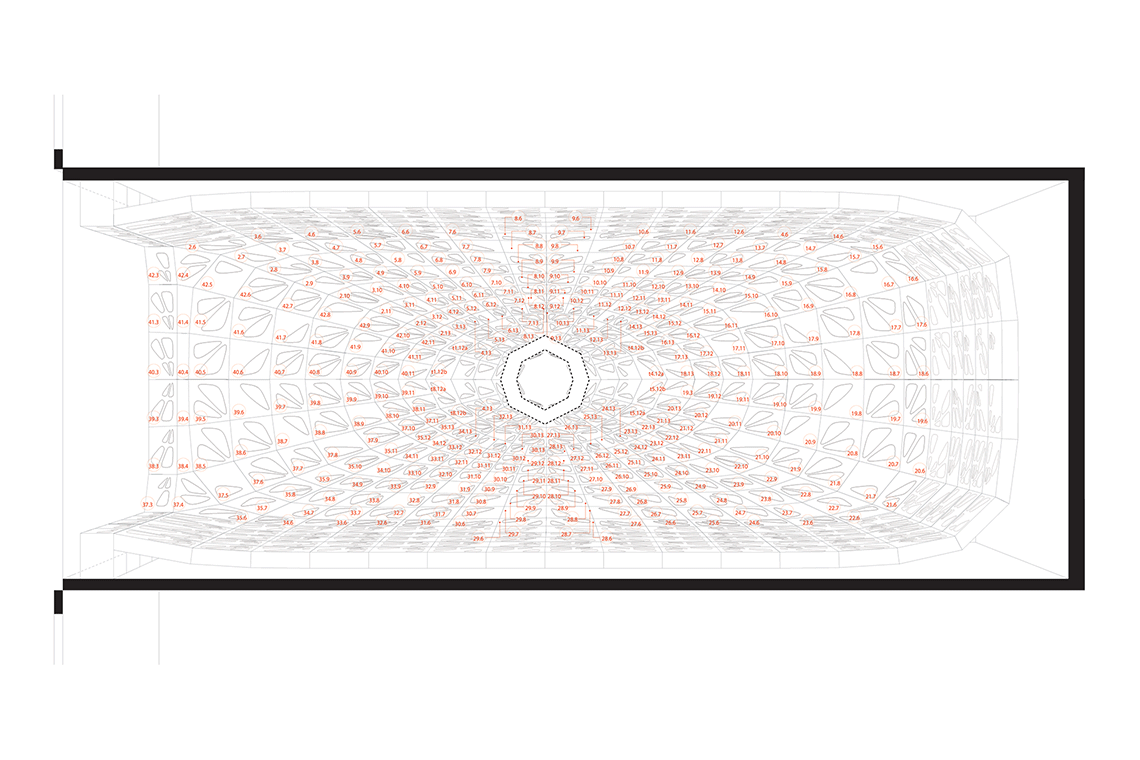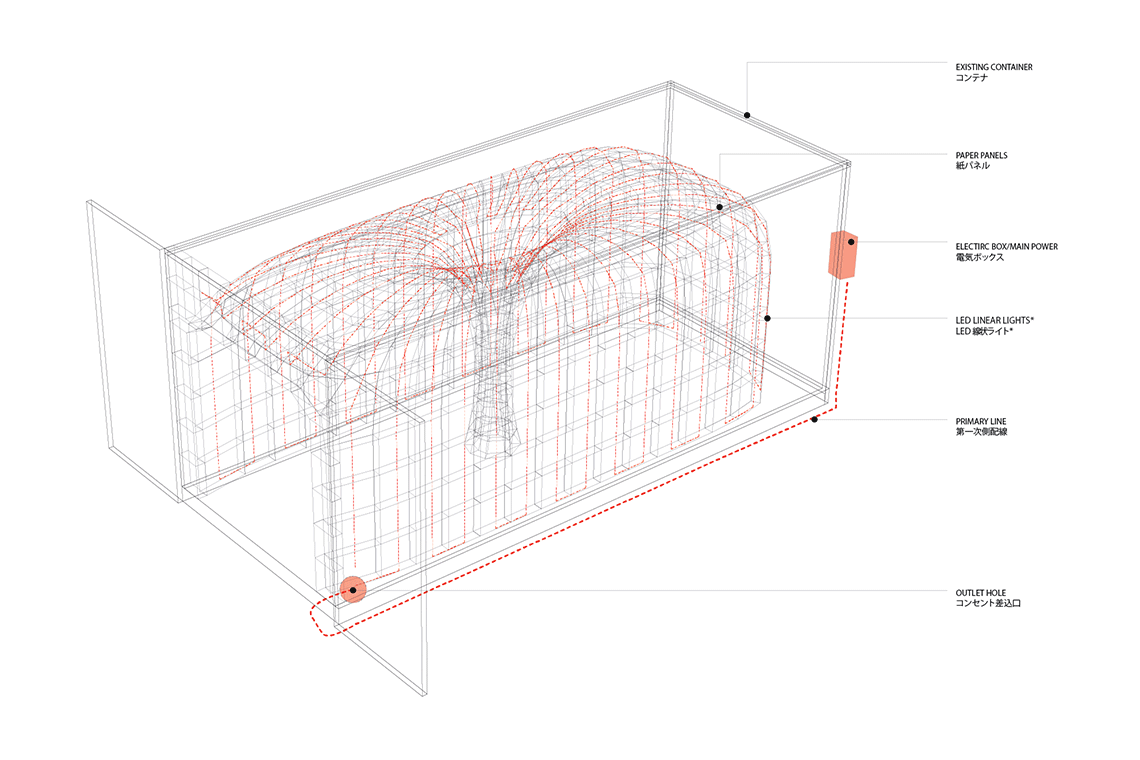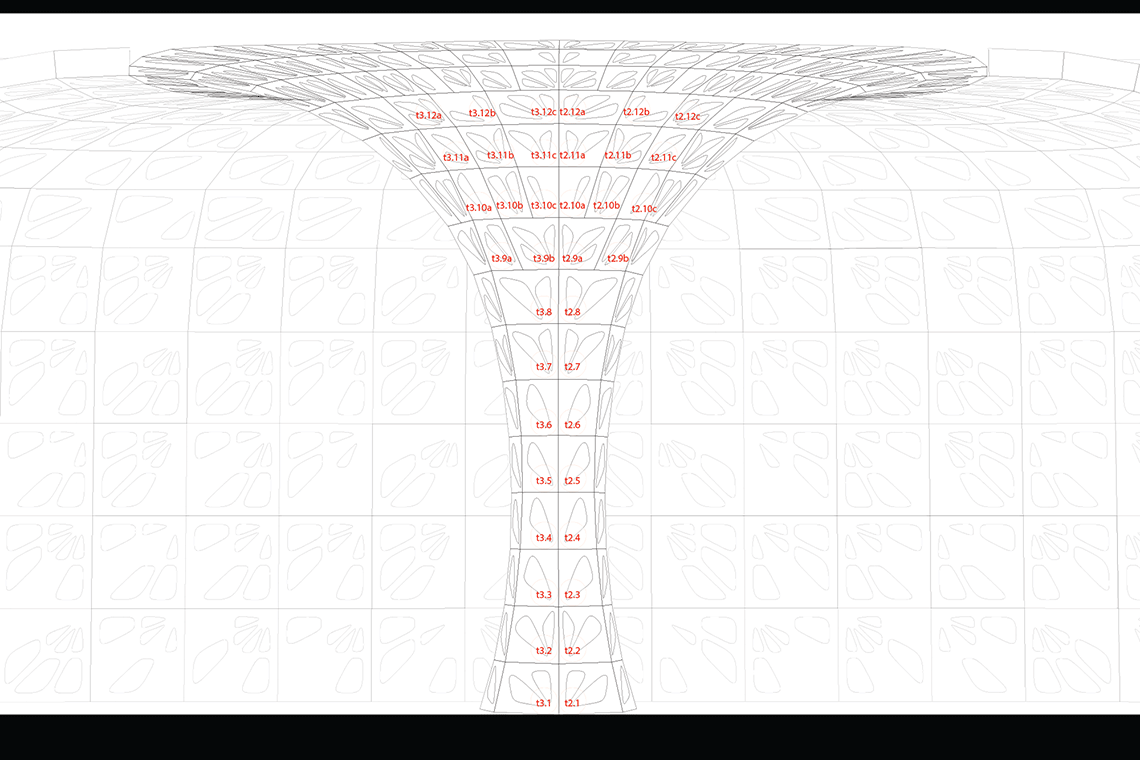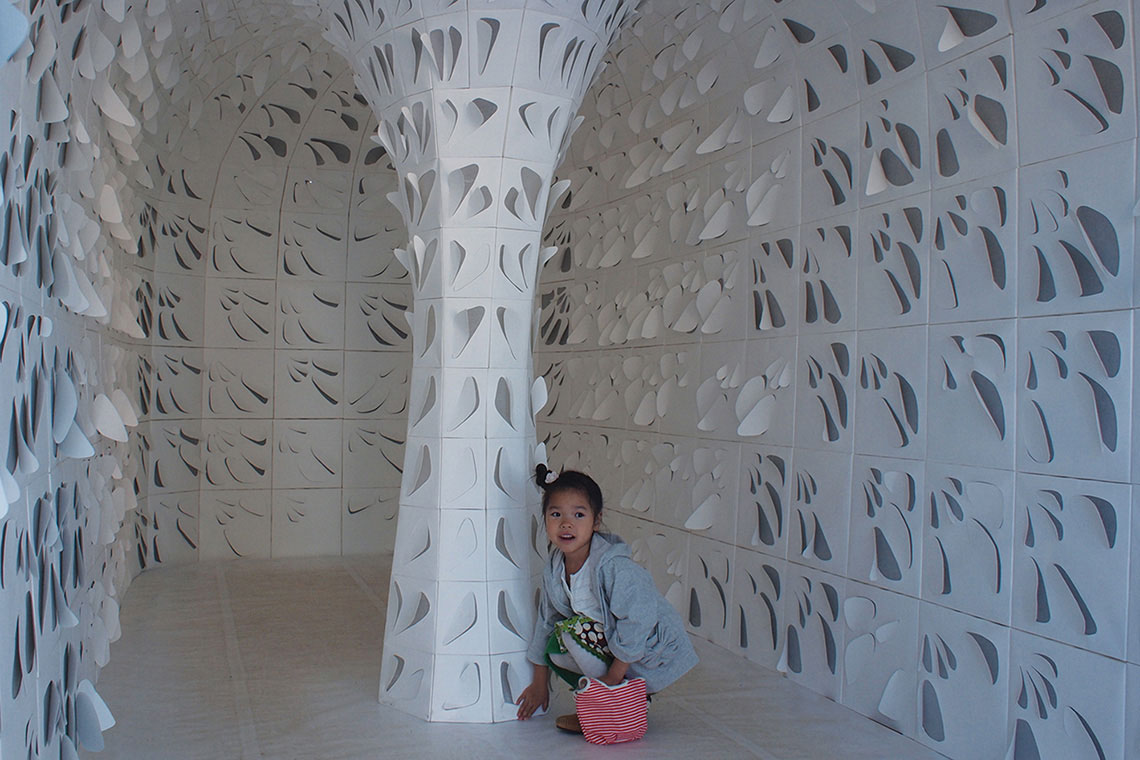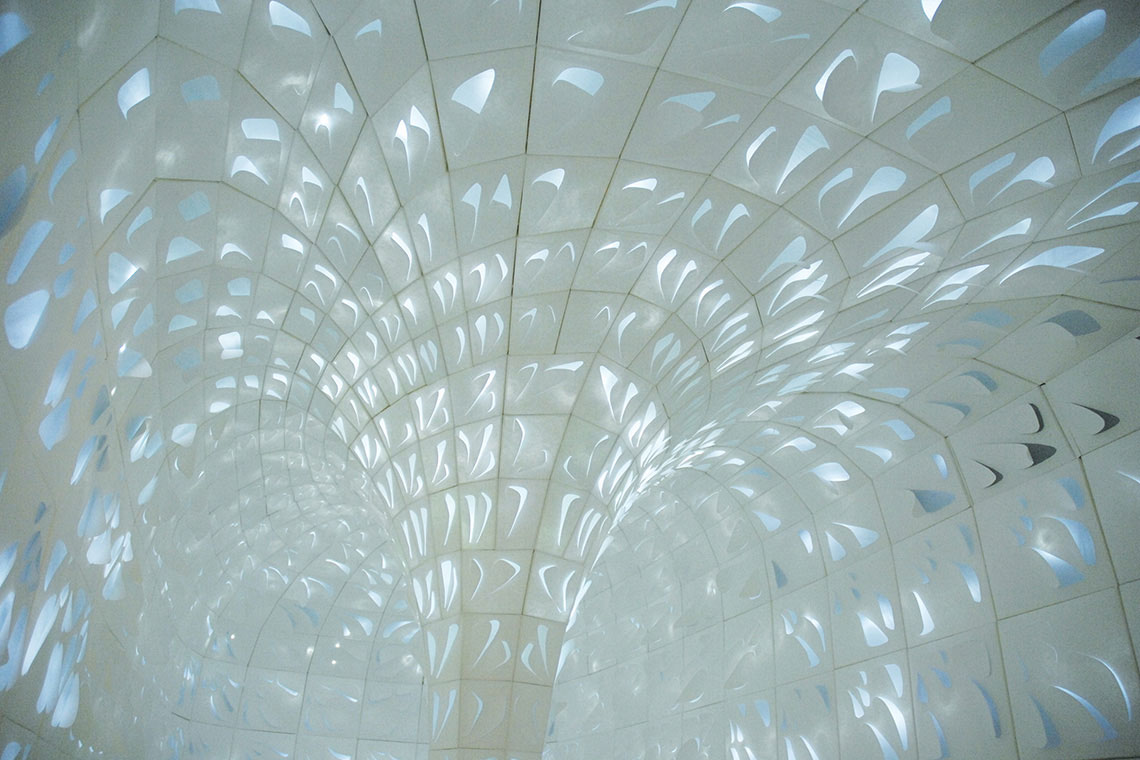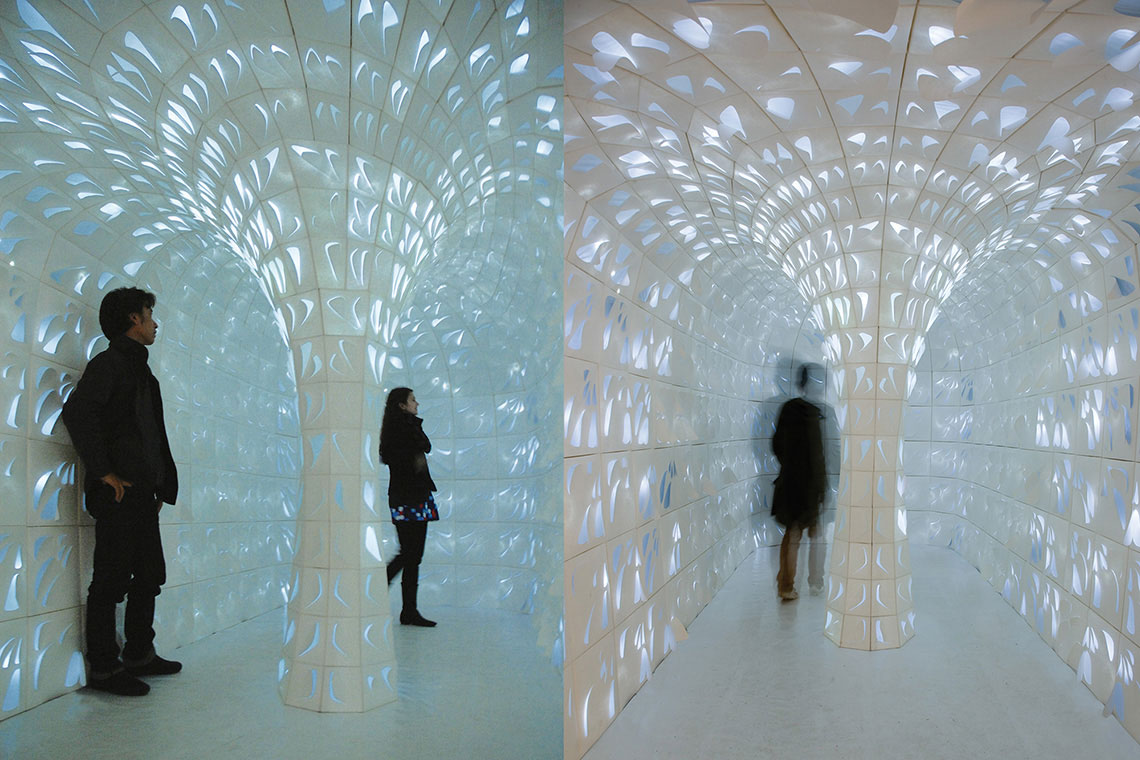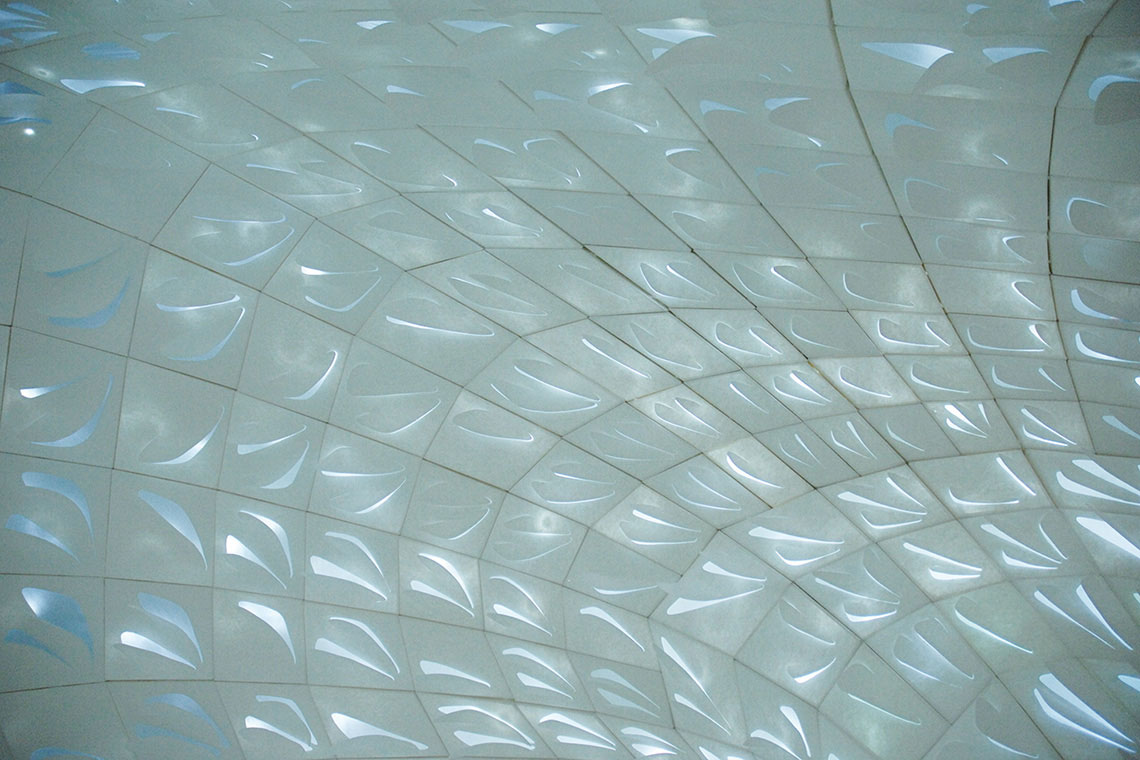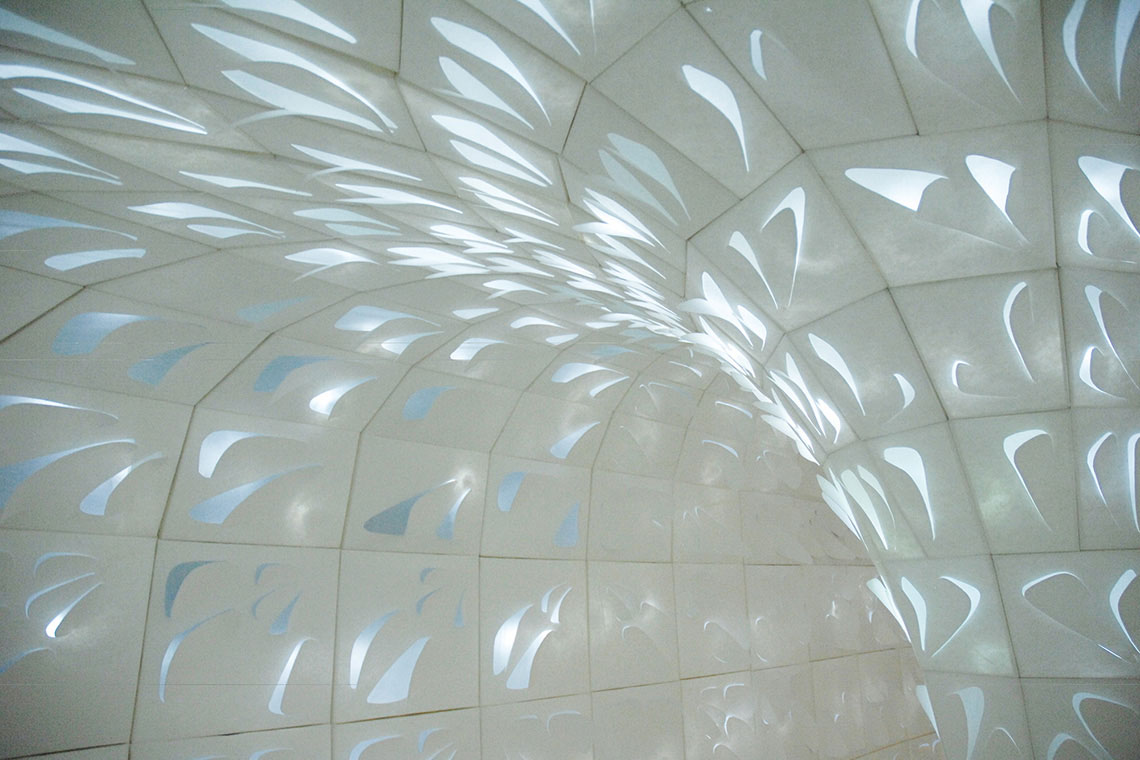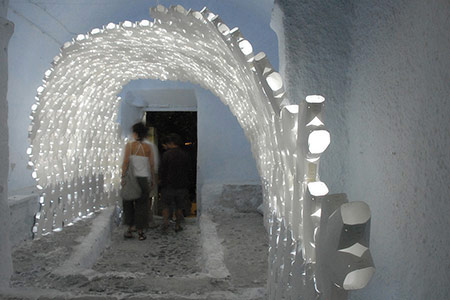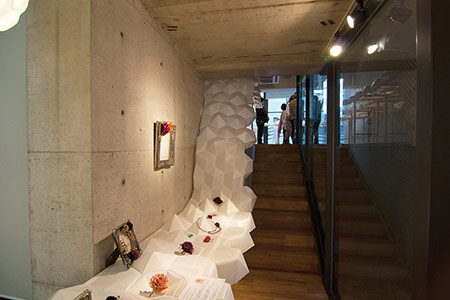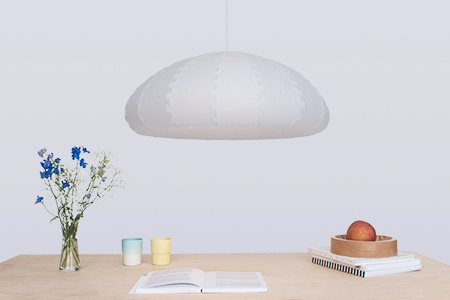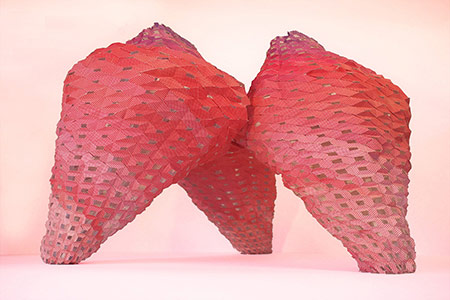Hope Tree
Hope Tree is a conceptual spatial installation with the aim to generate a discussion with the visitors about our inhabited environment. Various products on the market propose solutions for environmental damages without looking at the roots of problems and understanding of our environment.
A tree was chosen as a departing concept. Throughout the ages, a tree has been the most primitive form of a shelter, garden, and, most importantly, our companion. With human innovation and intervention, a tree has been contributing to our lives taking a different form, from a simple paper sheet to a complex house. Every fruit, flower and leaf that bears from a tree symbolizes a change and hope for tomorrow, yet, even a strong standing tree is frail. If not taken care properly we may eventually cease its presence. Hope Tree installation invites viewers to experience their surrounding environment anew through a single tree and a space that bears from it.
The installation required to be situated within the 20 feet shipping container. The construction of a toroid space within a container enclosure was created.
The toroid surface is composed of 670 self-supporting watercolor paper panels. In addition to the thickness of the watercolor paper, the rigidity of each panel was further reinforced with edges of cardboard to create a box form. The symmetry of toroid form allowed for minimized typological variation of the box panel easing the manufacturing process.
The box panels were then assembled in a spatial arch formation, inspired by the traditional masonry arch construction. This way of construction allowed the elliptical ceiling arch load to be equally distributed between the central column and the perimeter wall.
Leaf-like cutouts were strategically sized and deformed accordingly to the geometry of the box panels. The openings were backed with a tracing paper, which performed as a diffusing surface for the LED string lighting beyond. The application of LED lighting allowed the coverage of the entire space with minimal watt usage as the installation site had a strict restriction of not exceeding 1 KWt.
Total of 20 string-LED lights were used in this installation. In conjunction with the installation of the box panels from ground-top, these string-LED lights were linked and attached behind the box panels as it created the desired enclosure within the shipping container. There were several box panels that acted as access panels in case of LED lighting failure.
With low heat and low wattage production, LED lights were the safest and energy efficient choice to backlit paper panels.
Furthermore, the property of watercolor paper provided a dynamic response to the environmental factor within and outside of the container. The humidity and condensation created within the container during the constantly changing weather conditions during the duration of the exhibition allowed the leaf-like cutout to warp out and expose the diffused lighting each day.


